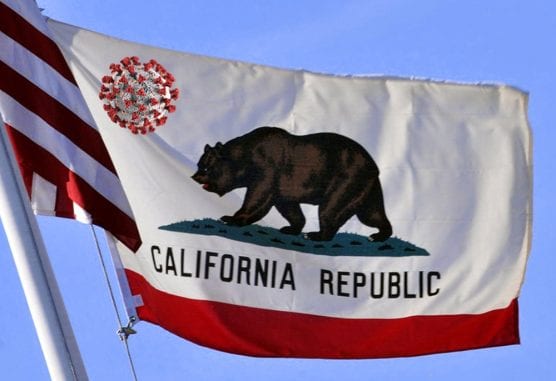COVID-19 killed people in America weeks earlier than first thought, according to a new report citing confirmation from the Centers for Disease Control and Prevention or CDC.
The first two deaths occurred on Feb. 6 and 17 in Santa Clara County, California — a tech hub that had previously considered March 9 its “first death” death date — the county’s health department said in a statement late Tuesday.
Nationwide, the first death date associated with the new coronavirus, whose scientific name is SARS-CoV-2, was reported in Washington state on Feb. 29.
Santa Clara said Tuesday that it has also confirmed a March 6 death was caused by COVID-19. Tissue samples obtained in the autopsies of these individuals were sent to the CDC for virus testing.
“These three individuals died at home during a time when very limited testing was available only through the CDC,” the county said. “Testing criteria set by the CDC at the time restricted testing to only individuals with a known travel history and who sought medical care for specific symptoms.”
Research suggests COVID-19 usually takes a month to cause death in an infected person, meaning these infections occurred sometime in late January when U.S. officials believed the virus was only in China.
Rodger MacArthur, a professor of medicine and infectious diseases expert at Augusta University, told Courthouse News he was not surprised by the discovery.
“There was very limited testing available at that time and those deaths came in the current or recently ended influenza season,” MacArthur said in an interview. “I imagine that they thought perhaps it was influenza or another circulating virus at that time. I think it does kind of raise the issue of when the first cases of COVID-19 actually occurred in the United States.”
MacArthur said there is a lot of speculation as to when the first case came to the U.S. since there was not widespread testing available at the time.
“It doesn’t surprise me that there were these earlier deaths, and it seems reasonable that suggests community spread at an early point, possibly from international travelers coming back,” he said.
“I think a lot of public health officials were worried about it, but I don’t think anyone could have predicted how widespread this virus would be.”
Santa Clara’s new disclosure comes days after a virus antibody study out of the University of Southern California suggested that the virus had arrived earlier and was much wider spread than originally thought.
Test results from the Los Angeles County Department of Public Health had put infections just below 8,000 when the study started the college’s findings, which suggest infection rates between 221,000 and 442,000.
“We haven’t known the true extent of COVID-19 infections in our community because we have only tested people with symptoms, and the availability of tests has been limited,” Neeraj Sood, lead scientist on the USC study, said at a press conference Monday announcing the study results.
But other doctors questioned the accuracy of that study.
“I don’t think the true prevalence is higher than their estimate,” Natalie Dean, an assistant professor of biostatistics at the University of Florida, tweeted following the study’s release.
Dean also questioned the lack of peer review and methods.
“Is a volunteer-driven serosurvey using a test with poorly characterized specificity the best science can do?” she wrote.
— By Brad Kutner
Like this:
Like Loading...
Related





 Tweet This
Tweet This Facebook
Facebook Digg This
Digg This Bookmark
Bookmark Stumble
Stumble RSS
RSS


























REAL NAMES ONLY: All posters must use their real individual or business name. This applies equally to Twitter account holders who use a nickname.
0 Comments
You can be the first one to leave a comment.